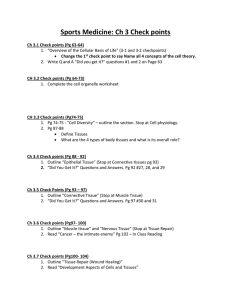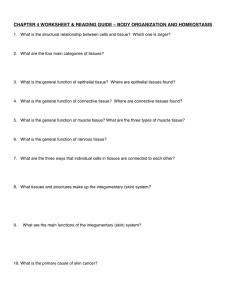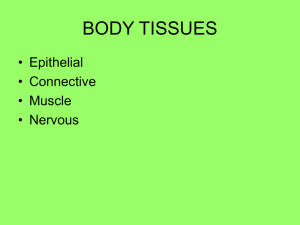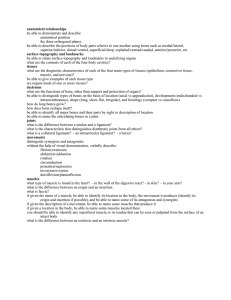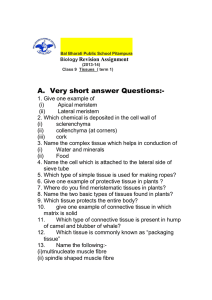tissue
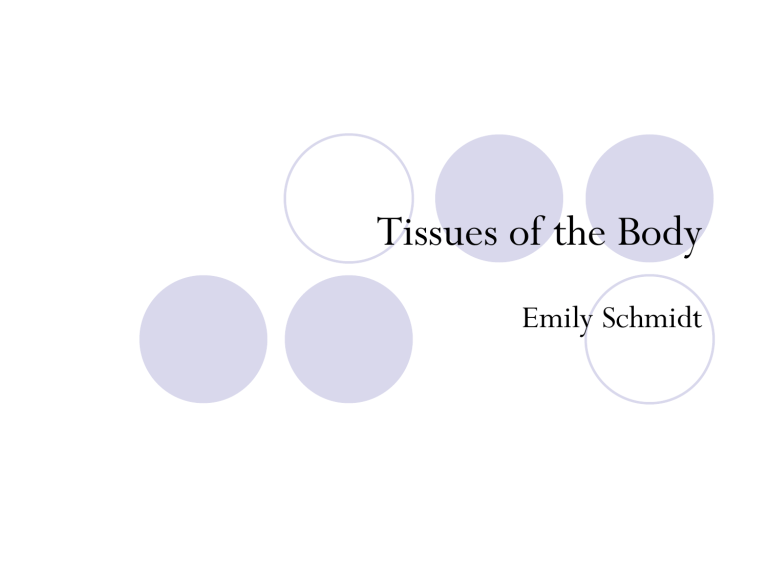
Tissues of the Body
Emily Schmidt
What is tissue?
A tissue is a group of similar cells that perform a common function.
All tissues are surrounded by or embedded in a nonliving intercellular material called a matrix.
Tissues differ regarding the amount and kind of intercellular matrix.
Histology is the biology of tissues.
Epithelial Tissue
Classification:
Membranous epithelium
Glandular epithelium
Functions:
covers and protects the body surface
lines body cavities
specializes in moving substances into and out of blood
Forms many glands
Click on image to find out more about epithelial tissue.
Connective Tissue
The most widespread tissue of the body
Classification:
Fibrous
Loose, Adipose, Reticular, and Dense
Bone
Cartilage
Hyaline, fibrocartilage, and elastic
Blood
Click the picture to learn more about connective tissue.
Connective Tissue
Functions
Connects tissues to each other
Connects muscles to muscles, muscles to bone, and bones to bones
Forms a supporting framework for the body as a whole and for its organs individually
Transports a large array of substance between parts of the body
Muscle Tissue
Classification
Skeletal muscle tissue
Muscles attached to bone
Smooth muscle tissue
Found in walls of the stomach, intestines, and blood vessels
Cardiac muscle tissue
Makes up the walls of the heart
Nervous Tissue
Function:
To rapidly regulate and integrate the activities of the different parts of the body
Found in the brain, spinal cord, and the nerves.
Two kinds of cells
Nerve cells/neurons
Conducting units of the system
Neuroglia
Special connecting and supporting cells
Click on picture to learn more about nervous tissue.
